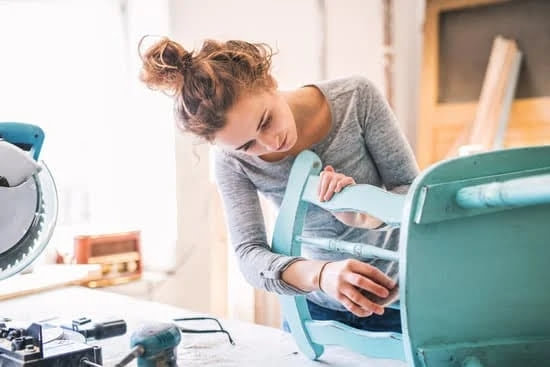Why are smoothing planes used last in woodworking? Smoothing planes are an essential tool in the woodworker’s arsenal, but they are typically utilized towards the end of a project. Understanding their purpose and importance is crucial for achieving a professional finish in woodworking.
Smoothing planes are a type of hand plane used to create a smooth and even surface on wood. They differ from other types of planes in their finer blade and shorter sole, making them ideal for refining the surface of the wood after rougher cuts have been made. In this article, we will explore the role of smoothing planes in woodworking and why they are often used as the final step in the process.
In our exploration, we will delve into the various types of woodworking planes and their respective uses to provide context for understanding why smoothing planes are used last. Additionally, we will discuss tips and techniques for using smoothing planes effectively, common mistakes to avoid, and how to choose the right smoothing plane for your specific woodworking project.
Lastly, we will touch on best practices for maintaining and caring for your smoothing plane to ensure its longevity and optimal performance. Whether you are new to woodworking or looking to expand your knowledge, this article aims to provide valuable insights into the world of smoothing planes.
Understanding the Purpose of Smoothing Planes in Woodworking
A smoothing plane is an essential woodworking tool that is used in the final stages of the woodworking process. Its primary purpose is to create a smooth and level surface on wooden pieces, ensuring a polished and refined finish. Smoothing planes are typically used after rough shaping and leveling with other types of planes, such as jack planes and jointer planes.
One of the main reasons why smoothing planes are used last in woodworking is their ability to produce fine shavings and a glassy-smooth surface. This precision allows woodworkers to achieve a flawless finish with minimal effort, making the use of sandpaper unnecessary or reducing the amount needed. Additionally, using a smoothing plane at the end of a project helps to remove any tear-out or tool marks left by previous planes, resulting in a professional-looking piece.
Another reason for using smoothing planes last is their delicate nature and precision. Smoothing planes are designed to be finely tuned and adjusted for very thin shavings, making them unsuitable for heavy material removal or shaping tasks.
Using them last ensures that any minor imperfections left by other tools can be easily rectified without causing damage to the overall surface of the wood. By understanding the purpose of smoothing planes in woodworking, craftsmen can harness their abilities to achieve exceptional results in their projects.
| Smoothing Planes in Woodworking | |
|---|---|
| Creates a smooth and level surface | Produces fine shavings for polished finish |
| Removes tear-out and tool marks | Delicate nature requires careful use |
Types of Woodworking Planes and Their Respective Uses
Woodworking planes come in a variety of types, each specifically designed for different purposes. Understanding the different types of woodworking planes and their respective uses is crucial for achieving the desired results in a woodworking project. Here are some common types of woodworking planes and their specific uses:
1. Smoothing Plane: This type of plane is used for the final finish on wood surfaces. It is ideal for creating smooth and even surfaces, removing any marks or imperfections left by other planes or tools. Smoothing planes are typically used last in the woodworking process to achieve a polished and flawless surface.
2. Jack Plane: The jack plane is a versatile tool that can be used for both rough work and initial smoothing. It is larger than a smoothing plane, making it effective for flattening surfaces and removing rough patches from lumber.
3. Jointer Plane: Jointer planes are longer than smoothing planes and are used to straighten edges, flatten long boards, and create smooth surfaces along the length of a board. They are essential for preparing pieces of wood before joining them together.
4. Block Plane: Block planes are small, handheld tools that are perfect for trimming end grain, chamfering edges, and fitting pieces of wood together. They are also useful for small-scale leveling tasks.
Why Are Smoothing Planes Used Last in Woodworking?
Smoothing planes are used last in woodworking because they provide the finishing touch to a project. After using other types of planes to prepare the wood surface, such as jointer planes and jack planes to flatten and smooth rough areas, the smoothing plane is then employed to achieve an impeccably smooth finish free from any blemishes or imperfections.
The fine blade angle of smoothing planes allows them to create an exceptionally polished surface that enhances the overall quality of the woodwork. Therefore, it is essential to use smoothing planes last in the woodworking process to achieve professional-looking results.
Why Smoothing Planes Are Used Last
A smoothing plane is an essential tool in woodworking, especially when it comes to adding the finishing touches to a project. While there are different types of woodworking planes with their respective uses, the smoothing plane is specifically designed to create a smooth and flawless surface on wood. But why are smoothing planes used last in woodworking? Let’s delve into the reasons behind this practice.
The primary purpose of using a smoothing plane last in woodworking is to achieve a glass-smooth finish on the wood surface. Unlike other planes that may leave behind visible marks or irregularities, the smoothing plane helps to eliminate any imperfections left by previous tools. This final step not only enhances the visual appeal of the wood but also creates a tactile surface that is pleasing to touch.
To understand why smoothing planes are used last in woodworking, it’s important to consider the sequence of operations involved in a typical woodworking process. After rough shaping and dimensioning the wood with other planes such as jack or jointer planes, using a smoothing plane as the final step ensures that any tear-out, gouges, or scratches left behind by previous tools are removed.
This results in a refined and polished appearance that showcases the natural beauty of the wood grain.
When using smoothing planes effectively, there are several tips and techniques that woodworkers should keep in mind to achieve optimal results:
- Ensure that the blade is sharp and properly adjusted for fine shavings
- Work against the grain initially before finishing with light passes along the grain
- Maintain consistent pressure and control throughout each pass to avoid uneven surfaces
By following these best practices and choosing the right type of smoothing plane for your project, you can achieve professional-quality finishes that elevate your woodworking creations.
Tips and Techniques for Using Smoothing Planes Effectively
When it comes to using smoothing planes effectively in woodworking, there are a few tips and techniques that can make the process easier and more efficient. Whether you are a beginner or an experienced woodworker, mastering the art of using a smoothing plane can greatly improve the quality of your finished projects.
Proper Setup and Adjustment
One of the most important aspects of using a smoothing plane effectively is ensuring that it is properly set up and adjusted. This includes sharpening the blade to a fine edge, adjusting the depth of cut, and setting the mouth opening. A sharp blade is essential for achieving smooth and clean cuts, so investing in high-quality sharpening tools is crucial for achieving optimal results.
Mastering Technique
Using a smoothing plane effectively also requires mastering proper technique. This includes holding the plane at the correct angle, applying consistent pressure, and maintaining a steady pace as you work across the surface of the wood. It may take some practice to develop this skill, but with time and patience, you can become proficient in using a smoothing plane with precision.
Understanding Grain Direction
Another important tip for using smoothing planes effectively is to understand and work with the direction of the wood grain. Planing against the grain can result in tear-out and rough surfaces, so it’s important to pay attention to the direction of the grain as you work. By following these tips and techniques, you can make the most out of your smoothing plane and achieve professional-quality results in your woodworking projects.
By understanding these tips and techniques for using smoothing planes effectively, woodworkers can achieve superior results in their projects. However, it’s also important to understand why are smoothing planes used last in woodworking.
Common Mistakes to Avoid When Using Smoothing Planes
When it comes to woodworking, using smoothing planes can greatly enhance the finish and quality of your projects. However, there are certain common mistakes that woodworkers should be aware of in order to avoid compromising the results. One common mistake is failing to properly sharpen the blade of the smoothing plane.
A dull blade can cause tear-out and rough surfaces on the wood, defeating the purpose of using a smoothing plane in the first place. It is important to regularly sharpen and hone the blade to ensure optimal performance.
Another mistake to avoid is applying too much pressure when using a smoothing plane. Exerting too much force can lead to uneven surfaces and may even damage the wood. Instead, it’s crucial to allow the sharp blade of the plane to do the work with minimal pressure from the user.
Additionally, failing to check for grain direction before planing can result in tear-out, especially on hardwoods. Woodworkers should always pay attention to the direction of the grain and adjust their planing technique accordingly.
Finally, neglecting to properly set up the smoothing plane before use is a common mistake that can impact its effectiveness. This includes adjusting the depth of cut and ensuring that all components are secure and functioning properly. By avoiding these common mistakes, woodworkers can achieve smooth and flawless finishes with their smoothing planes.
| Common Mistakes | Impact |
|---|---|
| Failing to sharpen blade | Tear-out and rough surfaces |
| Applying too much pressure | Uneven surfaces or wood damage |
| Neglecting proper setup | Ineffective performance |
Choosing the Right Smoothing Plane for Your Project
When it comes to woodworking, choosing the right smoothing plane for your project is essential in achieving a professional and polished finish. There are various types of smoothing planes available, each with its own unique characteristics and uses. Understanding the differences between these planes will help you make an informed decision on which one is best suited for your specific project.
Types of Smoothing Planes
One of the most common types of smoothing planes is the bench plane, which is versatile and can be used for a wide range of woodworking tasks. Another popular option is the low-angle block plane, known for its ability to work on end grain and perform delicate shaping tasks.
The curved sole spokeshave, on the other hand, is perfect for working on curved surfaces. Understanding the distinct features of each type of plane will allow you to choose the one that best matches your woodworking needs.
Factors to Consider
When choosing a smoothing plane for your project, consider factors such as the type of wood being used, the desired finish, and the specific tasks that need to be performed. For example, when working with hardwoods, a low-angle block plane may be more effective in achieving a smooth finish due to its lower cutting angle.
In contrast, when working with softwoods or delicate materials, a bench plane might be a better option. Considering these factors will ensure that you select the right smoothing plane for your particular woodworking project.
Maintaining and Caring for Your Smoothing Plane
In conclusion, understanding the purpose of smoothing planes in woodworking is essential for achieving a smooth and polished finished product. Smoothing planes are used last in the woodworking process because they are designed to provide that final finishing touch. They are specifically built for creating a fine, smooth surface that is free of any imperfections, tear-out, or rough spots. This makes them an essential tool for achieving professional-quality results in woodworking projects.
When it comes to using smoothing planes effectively, there are several tips and techniques that woodworkers should keep in mind. Proper setup, sharpening the blade, and maintaining consistent pressure during use can all contribute to achieving the best results. Additionally, knowing which type of smoothing plane to use for different projects and how to avoid common mistakes can make a significant difference in the final outcome.
Caring for and maintaining your smoothing plane is also crucial for its performance and longevity. Regular cleaning, oiling moving parts, and storing the plane properly can ensure that it remains in top condition for years to come. By following best practices and implementing these tips, woodworkers can make the most out of their smoothing planes and achieve professional-level finishing in their woodworking projects.
Frequently Asked Questions
What Is the Purpose of a Smooth Plane?
The purpose of a smooth plane is to create a smooth and flat surface on wood by shaving off thin layers of material. It is often used in woodworking to prepare the wood for finishing or to ensure that the surface is level and free of imperfections.
What Is a Wood Smoothing Plane Used For?
A wood smoothing plane is primarily used for refining and smoothing out the surface of wood. It helps to remove any tool marks, tear-out, or unevenness left behind by other woodworking tools like saws or routers. This results in a sleek and polished finish that is ready for staining, painting, or varnishing.
What Is the Function of Smoothing Plane in Metalworking?
In metalworking, the function of a smoothing plane is similar to its use in woodworking – it is used to create smooth and flat surfaces on metal workpieces. By removing thin layers of metal, it helps to eliminate any roughness, tool marks, or imperfections on the metal surface, making it ready for further processing or finishing.

Hi everyone! I’m a woodworker and blogger, and this is my woodworking blog. In my blog, I share tips and tricks for woodworkers of all skill levels, as well as project ideas that you can try yourself.





